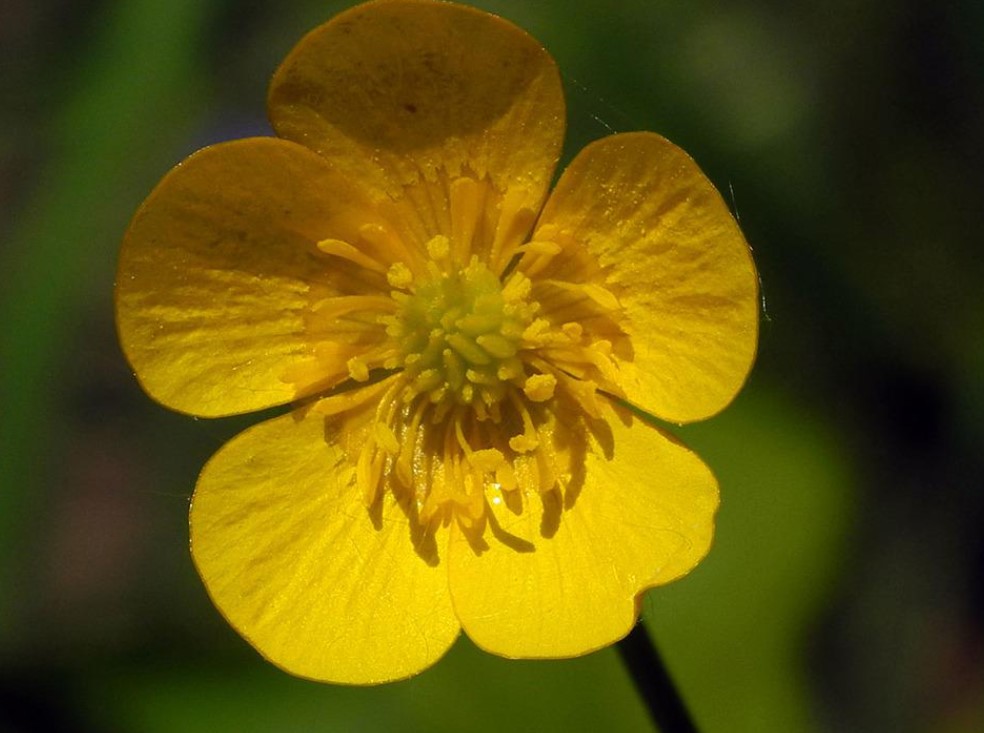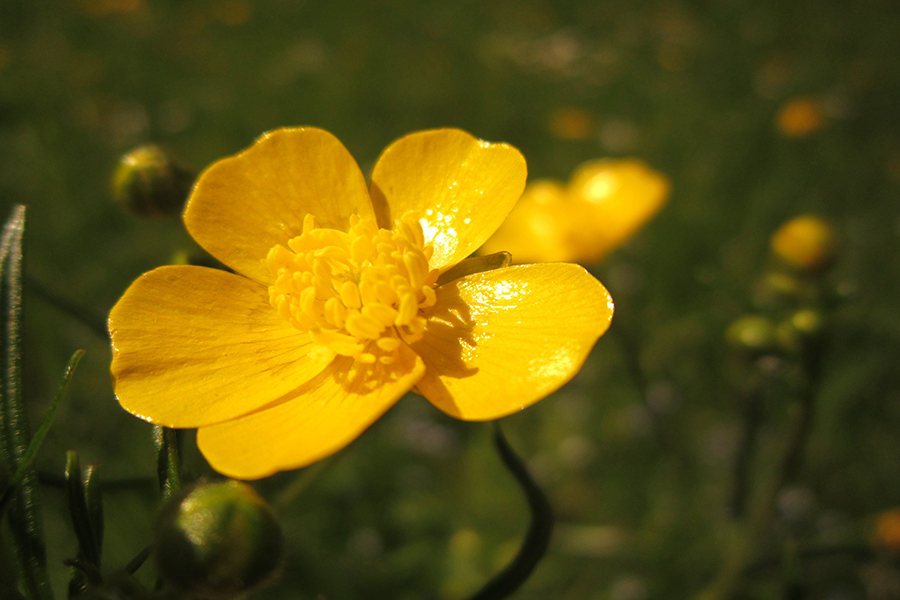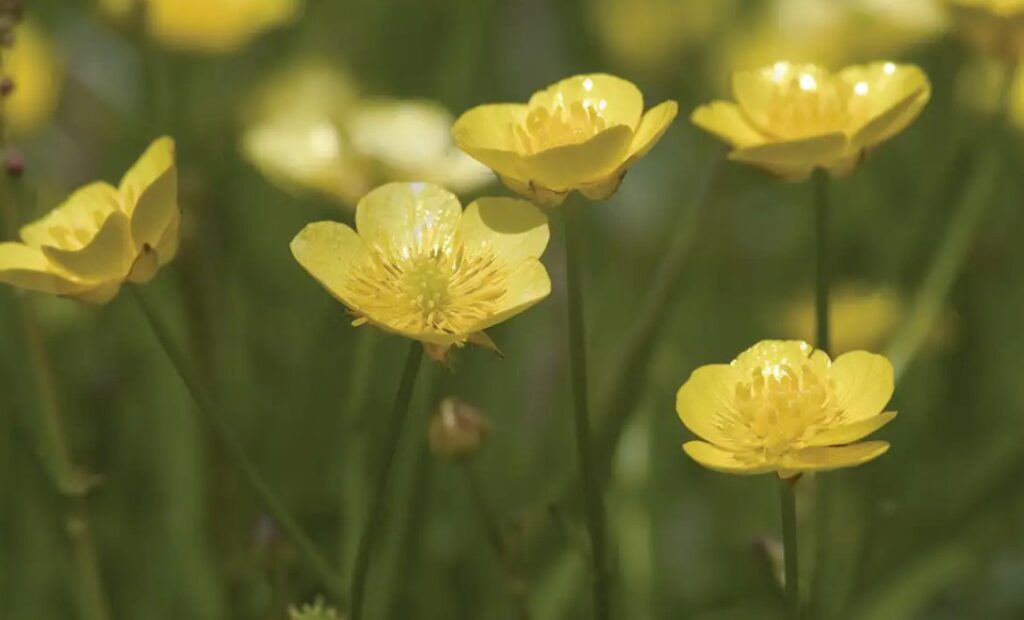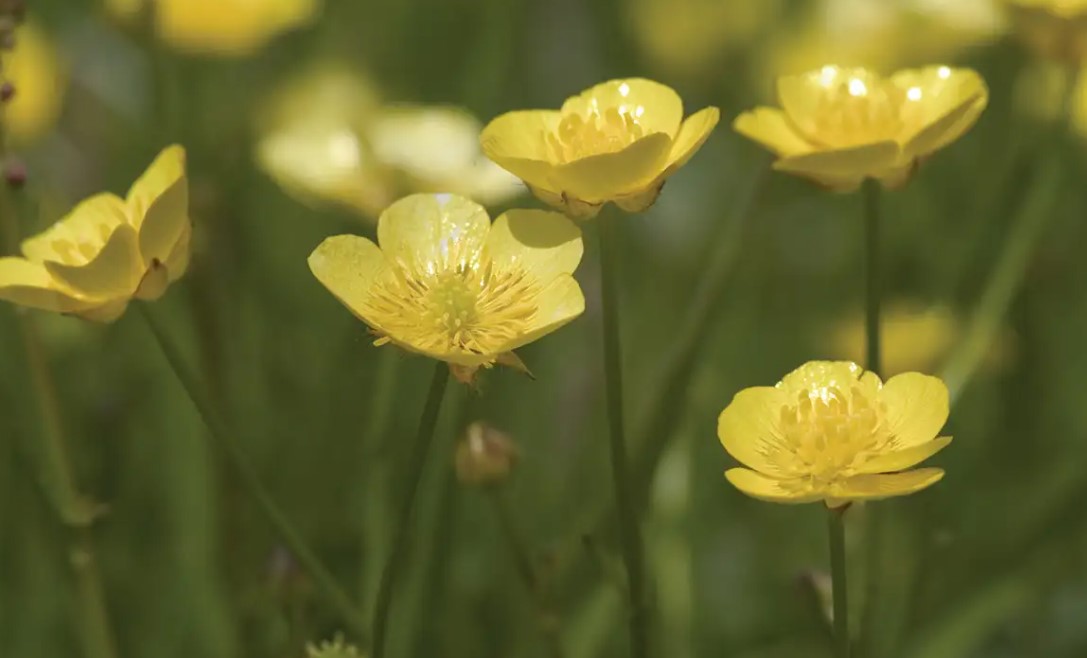Ranunculus, especially of the buttercup variety, has a long history in legend. In Latin, its name means “little frog,” because the flower was first spotted growing near bodies of water. The association with frogs continued in English folklore, where it was commonly believed that to pick ranunculus would give you warts.
Buttercups: they’re not just for daisy chains anymore! These cheerful little flowers have a lot to offer, from their bright yellow petals to their delicate fragrance. Plus, Buttercups are surprisingly tough flowers that can handle a lot of abuse. Keep reading to find out all about Buttercups, including where to find them and how to care for them.

What Is a Buttercup?
Buttercups are a type of flower that usually has yellow petals. They are often found in fields and meadows. The buttercup gets its name from the fact that its petals look like small butter knives. Buttercups have a very sweet smell, and they are often used in perfumes. Answer: Buttercups come from Europe, North America, and Asia. They grow in open fields and meadows, and often near water. The flowers are pollinated by bees and other insects.
Buttercups are usually perennial, but occasionally annual or biennial herbs that grow in the water or on land, with leaves in a rosette at the bottom of the stem. Runners are emitted from many perennial plants that may eventually produce new plants with roots and rosettes at distant nodes. The leaves lack stipules, have petioles, are palmately veined, are entire, more or less deeply incised, or compound and leaf segments may be very fine and linear in aquatic species. The male flowers are solitary or in a cyme and have five (but sometimes as few as three or seven) mostly green sepals and typically five yellow, greenish, or white petals that are occasionally flushed red, purple, or pink.

The genus name Ranunculus is derived from the diminutive form of rana, Late Latin for “little frog.” This most likely refers to many species that are found near water, such as frogs. The name buttercup may be derived from the misconception that the plants provide butter its distinctive yellow color (in fact, it’s hazardous to cattle and other livestock). Slaves in ancient Rome attempted to remove forehead tattoos from their masters by holding a kind of buttercup to the skin.
Cultivation and Usage of Buttercups:
Buttercups can be cultivated by planting the tubers or seeds in well-drained soil. They prefer sunny locations, but can also grow in partial shade. The plants should be watered regularly, but avoid over-watering as this can cause the tubers to rot. Fertilizing with a balanced fertilizer once a month is recommended. Harvesting can commence once the flowers have faded and the leaves have turned yellow. Simply cut off the stems near ground level and wash the tubers under running water to remove any soil or debris. Store in a cool, dry place until ready to use.

The most frequent uses of Ranunculus species in traditional medicines are as an anti-rheumatic, a rubefacient, and a fever remedy. The anti-inflammatory activities of some Ranunculus species, for example, protoanemonin, anemonin, and others may explain the uses of these plants in Asian folk medicine.
Buttercups are poisonous when eaten fresh, although the bitter flavor and blistering of the mouth caused by their poison mean they’re generally left uneaten. Naturally occurring ranunculin is broken down to form protoanemonin, which has been shown in humans to cause contact dermatitis. Because of this, it is essential to use gloves while caring for Ranunculus plants. Because the poisons are destroyed by drying, hay containing dried buttercups is safe.
The Surprising Origin Story Of The Buttercup Flower
Few flowers have such a rich history as buttercups. The term ranunculacean, used to describe plants in the same family as buttercups, is derived from the Latin word for frog. This might seem strange and out of place, but in fact it makes sense if you explore the stories that surround this flower. Ranunculus is a member of the family ranunculaceae, which is a plant group that evolved on land about 200 million years ago. It lived for a long time on land before returning to water sources such as lakes, rivers and especially ponds and marshes. Over time, the frogs began to live near them as well, where they can be spotted today. We may not think of frogs and flowers when we see one another, but there’s no denying their similarities. Even looking at a buttercup’s overall appearance will show us how similar it looks to our amphibious friends: the stems extend up from their center like an opened hand; their leaves are arranged circularly around the stem; and they produce bright yellow petals full of pollen above their green petals around the stem stem itself. But more than anything else, it’s buttercups’ flower namesakes that actually.
Buttercups FAQ
What do buttercups symbolize?
Buttercup symbolism encompasses everything pure of heart, youthful and cherished in a young person. In a word, everything that is pure of the heart and beautiful in a child can be symbolized by this gentle little yellow flower. Kids are wonderful they are full of life and joy, and their pure hearts haven’t been yet hardened by the outside world.
The buttercup flower’s primary meaning is one of lightness and joy. Its bright yellow color is often linked to sunshine, happiness, and positivity. Buttercups are often seen carpeting meadows and fields, creating a sense of carefree merriment.
Meaning of buttercup flowers youth and innocence. Perhaps due to their abundance in meadows where children play, or their simple, unpretentious beauty, buttercups have come to symbolize the carefree spirit of youth.
In some cultures, buttercups represent purity and humility. Their simple form and delicate petals evoke a sense of innocence and clean-heartedness.
What part of the buttercup is poisonous?
The buttercup is very colorful and is a delightful flower to look at in the spring. What you may not know is that some of these flowers are poisonous. Part of what makes them so colorful is a compound called ranunculin. When the leaves or stems of these plants are crushed, this compound breaks down to form another compound, protoanemonin. Protopoanemonin is toxic and can be harmful if you come into contact with it or ingest it.
What happens if you eat a buttercup?
Poisoning can occur where buttercups are abundant in overgrazed fields where little other edible plant growth is left, and the animals eat them out of desperation. Symptoms include bloody diarrhea, excessive salivation, colic, and severe blistering of the mouth, mucous membranes and gastrointestinal tract.

